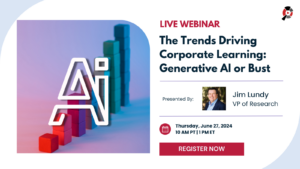A New Era of AI and Edge Architecture
A New Era of AI and Edge Architecture
I am pleased to release a new note on the emergence of edge computing. In it, we explore the possible scenarios for GPU- and AI-fueled edge computing and how you must prepare for it (See: Strategic Planning Scenario: Prepare for the Impact of AI and Edge Computing).
Major trends
The rise of AI architecture, encompassing large language models (LLMs), small language models (SLMs), and neural networks, is reshaping the way organizations operate. The transition from CPU-centric to GPU-centric computing is accelerating AI capabilities, enabling faster processing and more sophisticated applications.
Edge computing, on the other hand, is distributing intelligence closer to the data source, reducing latency and enhancing real-time processing. These trends, in combination, are revolutionizing technology-enabled business architectures.
Your Future Computing Architecture
Over the next 5 years, your computing architecture will be a hybrid model, with organizations leveraging a combination of cloud computing, edge computing, CPU, and GPU processing. The specific mix will depend on individual business needs, security considerations, and the diversity of AI-driven applications.
However, we do see a dramatic shift toward GPU and AI-fueled edge computing.
By 2027, at least 50% of large organizations’ computing resources will be on edge computing devices, and at least 70% will be on GPU-based computing platforms.
How Do You Prepare?
Organizations must prepare for this shift by planning for the increased costs associated with AI services and GPU-powered infrastructure.
- Define clear governance, security, and management policies, especially for user-introduced edge devices.
- Develop training programs for both people and AI systems will be crucial to ensure a smooth transition.
- Continuously review and update their business strategies and operations to capitalize on new market opportunities and mitigate potential threats.
- Don’t forget people change management issues. Make sure your employees, partners and customers understand the potential benefits and impacts of edge computing, and active work to engage them in the planning process.
Bottom Line
The convergence of AI, GPU, and edge computing is ushering in a new era of AI architecture (business and technology). Organizations that proactively embrace these technologies and align them with their strategic goals will be well-positioned to thrive in this dynamic landscape.
By adopting a business-first approach and leveraging scenario planning, businesses can navigate the complexities of modern computing and unlock the transformative power of AI, GPU, and edge computing.
Upcoming Webinar

Trends Driving Corporate Learning: Generative AI or Bust
Learning is at a crossroads. It is time for a new approach to Learning and Training. With Generative AI, the opportunity is here to speed up training content design and creation.
In this webinar, Aragon CEO and Lead Analyst Jim Lundy discusses the big changes that are coming to the learning market:
- What are the technology trends that will impact the Learning Market?
- How will Generative AI help speed up content Creation?
- How can enterprises gain a competitive advantage by modernizing their approach to Corporate Learning

Have a Comment on this?